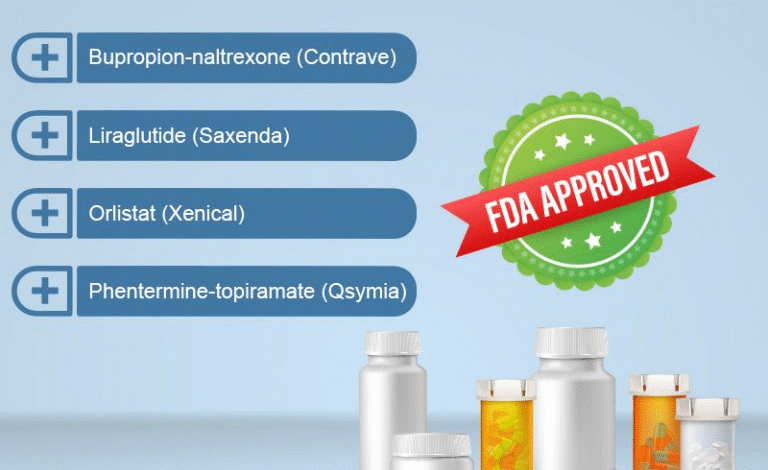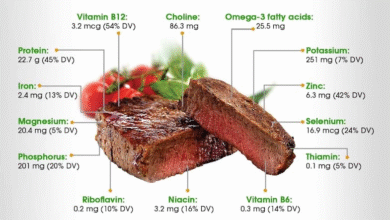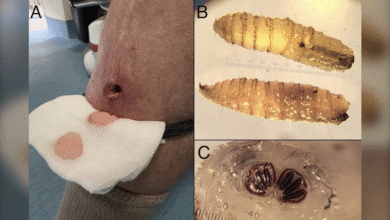Weight Loss Drugs: Effects on Mental Health Explored

Weight loss drugs are gaining increasing attention for their effectiveness in combating obesity and type 2 diabetes. Among these medications, GLP-1 receptor agonists, like semaglutide, are at the forefront, evidenced by their rising popularity. However, a pressing question looms: how do these weight loss medications impact mental health? Experts have reported a complex relationship between these drugs and mental health effects, noting associations with mood alterations such as anxiety and depression. As healthcare providers prescribe these medications, understanding the substance’s mental health impact is crucial to ensure patient safety and holistic treatment.
The emergence of pharmaceutical solutions for shedding pounds, often referred to as anti-obesity medications, has sparked considerable debate within the medical community. These treatments, particularly those targeting GLP-1 pathways, have demonstrated significant benefits in weight management and diabetes control. Yet, the interplay between these substances and psychological well-being remains under scrutiny. Researchers are examining how these medications influence emotional health, with particular focus on the interplay between semaglutide and fluctuations in mood. As we delve deeper into this topic, it is essential to explore both the benefits of these drugs and the potential challenges they may pose to mental wellness.
The Role of Weight Loss Drugs in Mental Health
Weight loss drugs have gained significant attention not only for their physical benefits but also for their potential mental health effects. As individuals seek to shed pounds, the psychological implications of these medications can be profound. Many potential users are concerned about how weight loss medications, particularly GLP-1 receptor agonists like semaglutide, could influence mental well-being. Research indicates that some individuals may experience mood fluctuations upon starting these treatments, prompting ongoing studies to discern the connection between weight loss and mental health changes.
Moreover, it is essential to address that those struggling with obesity or type 2 diabetes are often predisposed to mood disorders such as anxiety and depression. This correlation raises crucial questions about whether the medication itself triggers mental health issues or if the underlying conditions contribute to these challenges. Experts emphasize the importance of nuanced discussions regarding mental health when prescribing weight loss drugs, as understanding the patient’s history can lead to better management strategies.
Frequently Asked Questions
Can weight loss drugs impact mental health, especially GLP-1 receptor agonists?
Yes, while weight loss drugs like GLP-1 receptor agonists (GLP-1 RAs) can lead to significant physical health improvements, they may also impact mental health. Some studies suggest that these medications can exacerbate mood disturbances, particularly in patients with a history of depression and anxiety. It’s crucial for healthcare providers to monitor these potential effects as part of treatment.
Is there a link between semaglutide and mood changes?
Research indicates that semaglutide, a type of GLP-1 receptor agonist used for weight loss, can be associated with mood changes in some patients. However, the relationship is not entirely clear, as mood disturbances could also stem from underlying conditions rather than the medication itself. Continuous monitoring and consultations with healthcare providers are recommended.
What are the mental health effects of weight loss medication like liraglutide?
Liraglutide, another GLP-1 receptor agonist, can influence mental health. While some patients experience improved confidence and mood following weight loss, others may report anxiety or depressive symptoms. This duality emphasizes the importance of personalized medical advice during treatment with weight loss medications.
Do GLP-1 receptor agonists like Ozempic have a consistent effect on mood?
The effects of GLP-1 receptor agonists like Ozempic on mood are variable. While some patients may experience improvement in their mood post-weight loss, others report negative mood changes. Current studies suggest that these variations might be related to genetic factors rather than the medications directly.
How should patients on weight loss drugs approach mood changes?
Patients taking weight loss drugs, including GLP-1 receptor agonists, should maintain open communication with their healthcare providers regarding any mood changes. It is essential to assess whether these mood shifts are linked to the medication or underlying issues related to obesity or diabetes.
Are weight loss drugs like semaglutide effective in improving self-esteem and psychological well-being?
Yes, semaglutide can enhance self-esteem and overall psychological well-being in patients experiencing significant weight loss. As individuals achieve their weight loss goals, improvements in body image and confidence often follow, which positively affects mental health.
Why is monitoring mental health important when prescribing GLP-1 RAs for weight loss?
Monitoring mental health is critical when prescribing GLP-1 receptor agonists for weight loss due to potential mood disturbances linked to these medications. Healthcare providers should evaluate patients’ mental health history and consider the complexities of obesity treatment to provide comprehensive care.
What should patients know about the mental health impact of weight loss drugs?
Patients should be informed that while weight loss drugs, especially GLP-1 receptor agonists, can lead to weight loss and improved physical health, they may also have varying effects on mental health. Awareness of potential mood changes and proactive communication with providers can help manage these effects.
What research exists on the connection between weight loss medication and mental health?
Research has shown mixed results regarding the connection between weight loss medications like GLP-1 receptor agonists and mental health. Some studies highlight potential mood disturbances, while others suggest the benefits of improved physical health may also boost mental well-being. Ongoing studies are necessary for clearer insights.
Can weight loss drugs lead to a reduction in anxiety and depression?
For some patients, effective weight loss achieved through medications like GLP-1 receptor agonists can reduce symptoms of anxiety and depression, especially as overall health and self-image improve. However, individual responses vary, necessitating personalized treatment approaches.
| Key Points | Details |
|---|---|
| Impact on Mental Health | Some studies suggest potential mood disturbances, such as anxiety and depression, linked to GLP-1 receptor agonists (GLP-1 RAs). Research emphasizes the need for awareness among healthcare providers. |
| Research Findings | NIH research indicates a correlation between semaglutide therapy and mood disturbances, particularly in patients with a history of depression. |
| Genetic Factors | A recent study identifies genetic variations as influencing mood changes among diverse populations, suggesting that behavioral changes might not be directly caused by GLP-1 RAs. |
| Expert Opinions | Experts like Dr. Brett Osborn believe there’s no consistent causal relationship between GLP-1 RAs and mental illness. Weight and pre-existing conditions are significant factors. |
| Mood Improvement Potential | Some patients report improved mood and self-esteem following weight loss with GLP-1 RAs; however, this varies among individuals. |
| Doctor-Patient Communication | It is crucial for patients to maintain communication with their healthcare providers to manage mood changes and overall health. |
| Call for Further Research | Experts urge the need for randomized controlled trials to better understand the psychiatric effects of weight loss medications. |
Summary
Weight loss drugs, particularly GLP-1 receptor agonists, raise important questions surrounding mental health. While some evidence suggests potential mood disturbances associated with these drugs, experts argue that individual patient histories and weight-related challenges play a significant role in mental health outcomes. Thus, ongoing communication with healthcare providers is essential for anyone considering or currently using weight loss medications. Continued research is needed to unravel the complex relationship between weight loss drugs and mental health, ensuring patients receive comprehensive care.




